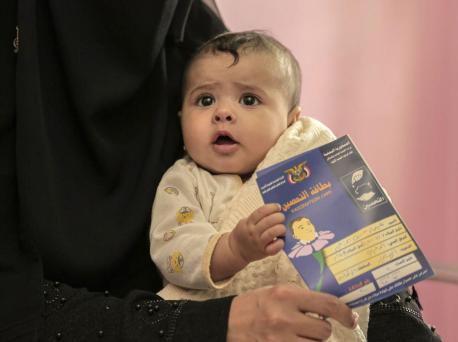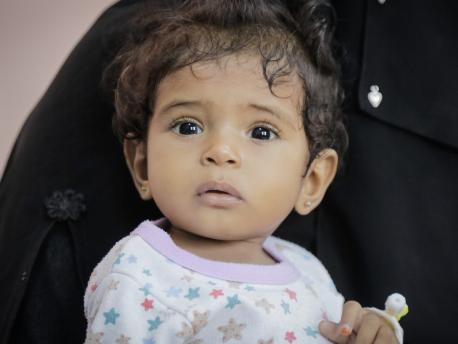
A New Crisis Looms for Rohingya Refugees: Monsoon Season
Makeshift tarpaulin-covered bamboo structures perch precariously up and down the muddy hillsides, as far as the eye can see. Since August, waves of Rohingya refugees have fled their homes in Myanmar's Rakhine state and streamed into neighboring Bangladesh, escaping a military crackdown that United Nations High Commissioner for Human Rights Zeid Ra'ad Al Hussein has called "a textbook example of ethnic cleansing." Since the 12th century, the Rohingya, an impoverished minority, have lived on land that is part of present-day Myanmar. Denied citizenship in the predominantly Buddhist country, the ethnic Muslim Rohingya have long faced persecution, which escalated dramatically last year into a widespread campaign of brutal violence and atrocities, including gang rapes and massacres, displacing an estimated 1.2 million people.
A campaign of violence has driven 1.2 million people from their homes
Seven months into the crisis, traumatized Rohingya are still arriving in Bangladesh, running for their lives. Sixty percent of the displaced Rohingya are children, all in dire need of humanitarian assistance and protection. "People are continuing to come at a rate of 1,000 or more a week," reports UNICEF Senior Communications Advisor Simon Ingram. "That number in itself speaks to the situation on the ground: the anxiety, the fear, the continued threat that violence holds over the people in those communities."

Rohingya refugee children look out at the sea of plastic-and-bamboo shelters in the Balukhali makeshift settlement in Cox's Bazar, Bangladesh in November 2017. © UNICEF/UN0148170/Brown
An emergency inside an emergency
Now a new crisis is emerging: monsoon and cyclone season. Floods and landslides caused by upcoming storms are expected to engulf the already overcrowded camps. "Hundreds of thousands of children are already living in horrific conditions, and they will face an even greater risk of disease, flooding, landslides and further displacement," says Edouard Beigbeder, UNICEF Representative in Bangladesh.
Makeshift shelters may collapse and slide down the deforested hills; latrines may flood in the heavy rains, contaminating drinking water and spreading waterborne illnesses. Health workers warn that conditions are ripe for a cholera epidemic. Emergency hospitals, schools, nutrition clinics, protection centers and other infrastructure will need to be rebuilt. An already fragile population could be devastated. The region is known for catastrophic storms: the world's all-time deadliest weather event, the Bhola Cyclone, struck East Pakistan, now Bangladesh, in 1970, killing up to 500,000 people.
UNICEF is preparing for storms and flooding
To prepare for the storms to come, UNICEF and humanitarian partners are prepositioning water storage tanks, relocating toilets and water distribution points to higher ground and installing elevated latrines in lower areas. Vaccination teams have fanned out to administer the oral cholera vaccine to 1.1 million people and to ensure that children under the age of 2 get their full range of vaccinations.
UNICEF has been in Bangladesh since the crisis began, screening and treating malnourished children, distributing hygiene kits and water purification tablets, and providing clothing and shoes for children who arrive at the border nearly naked. Education specialists have set up Child-Friendly Spaces where traumatized children can go to receive counseling and to play, learn and feel safe. "The hope and expectation that they have, despite all the tragic events that they have gone through, is really very touching," says UNICEF Senior Emergency Coordinator AK Musse. "They have hope, they have a future ahead of them."
Help UNICEF protect Rohingya refugee families during the monsoon season. Your contribution can make a difference.
Photo at top: Rohingya refugee children walk along a narrow path hugging a steep slope in the Unchiprang makeshift settlement in Cox's Bazar, Bangladesh in January 2018. © UNICEF/UN0157354/Nybo
HOW TO HELP
There are many ways to make a difference
War, famine, poverty, natural disasters — threats to the world's children keep coming. But UNICEF won't stop working to keep children healthy and safe.
UNICEF works in over 190 countries and territories — more places than any other children's organization. UNICEF has the world's largest humanitarian warehouse and, when disaster strikes, can get supplies almost anywhere within 72 hours. Constantly innovating, always advocating for a better world for children, UNICEF works to ensure that every child can grow up healthy, educated, protected and respected.
Would you like to help give all children the opportunity to reach their full potential? There are many ways to get involved.





